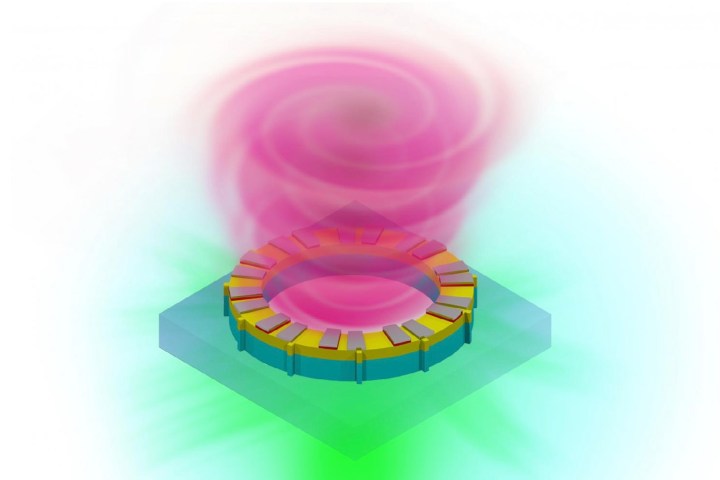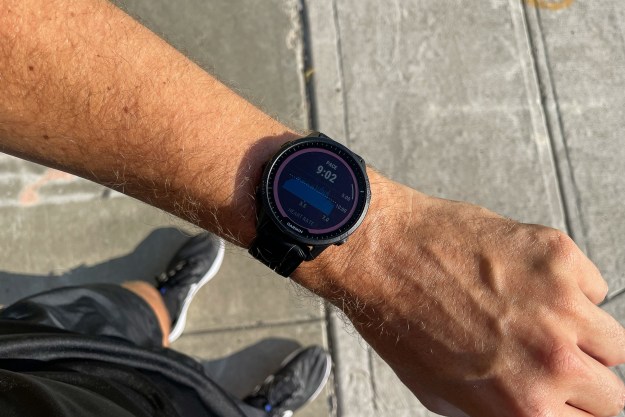
But while Moore’s Law has held true since 1965, in recent years speculation has arisen that it would soon stop holding true. Some researchers have even suggested that — unless something dramatic happened — it may not continue past the next five years.
A new research project carried out by researchers at the University at Buffalo’s School of Engineering and Applied Sciences and Polytechnic University of Milan in Italy may just be that “something dramatic.” The researchers have unveiled a new tiny laser which emits a beam of light in a whirlpool-style corkscrew pattern, which could be used to convey 10 times the amount of information currently carried by modern optical communication systems. The result may be a crucial component in the quest to build increasingly powerful computers into the foreseeable future.
“Our microlaser is the first independent micro/nanoscale laser source emitting complex vector beams carrying the [orbital angular momentum] information available for an ultimate miniaturized optical communication platform,” Liang Feng, assistant professor at the University at Buffalo, told Digital Trends. Feng added that, “The use of orbital angular momentum (OAM) light is expected to enable the implementation of entirely new high-speed secure optical communication and quantum teleportation systems in a multidimensional space by encoding information with different OAM, satisfying the exponentially growing demand worldwide for network capacity.”
Feng notes that the technology is still currently firmly in the research stages, although a finished scaleable product could appear sooner than people think. “We are now working on electrically driven OAM microlasers such that the lasers can be integrated on an advanced signal processing chip or simply plugged in all kinds of optical comms applications,” he says. “The electrically driven OAM microlaser is expected in a year or so.”
And just when we were thinking we couldn’t like lasers any more than we already do.


